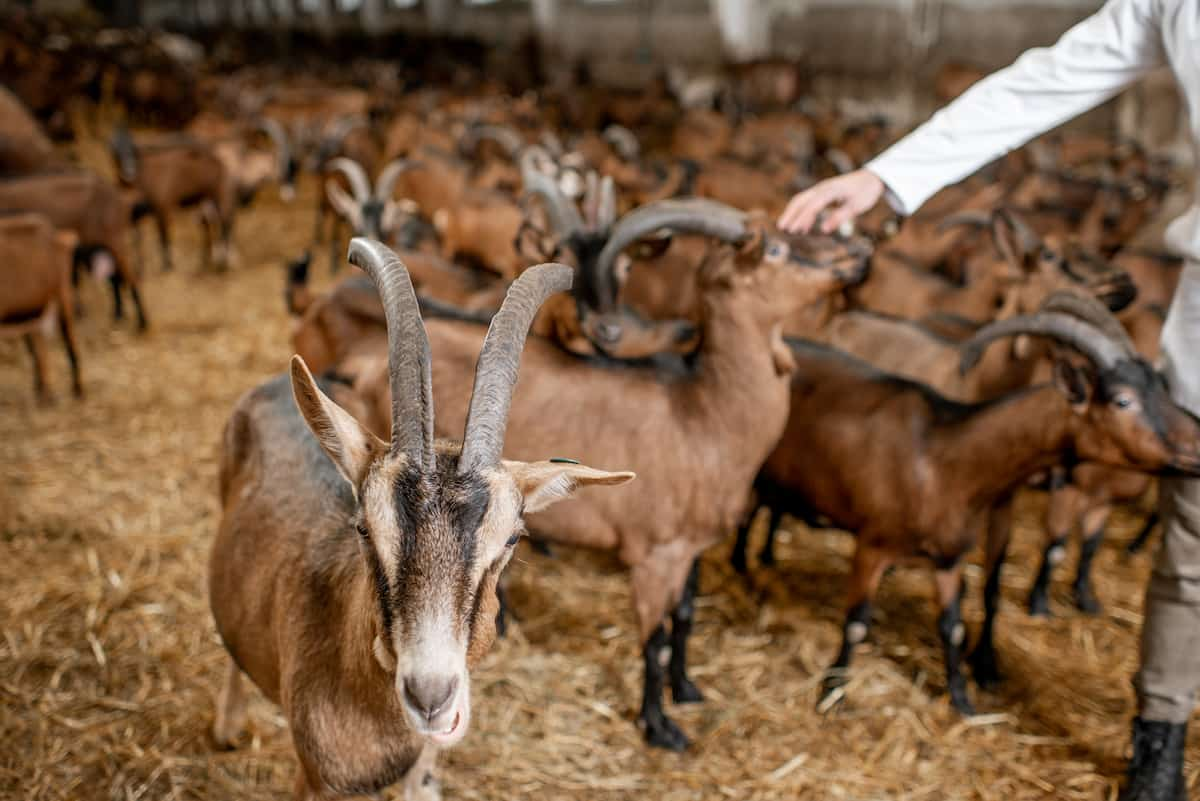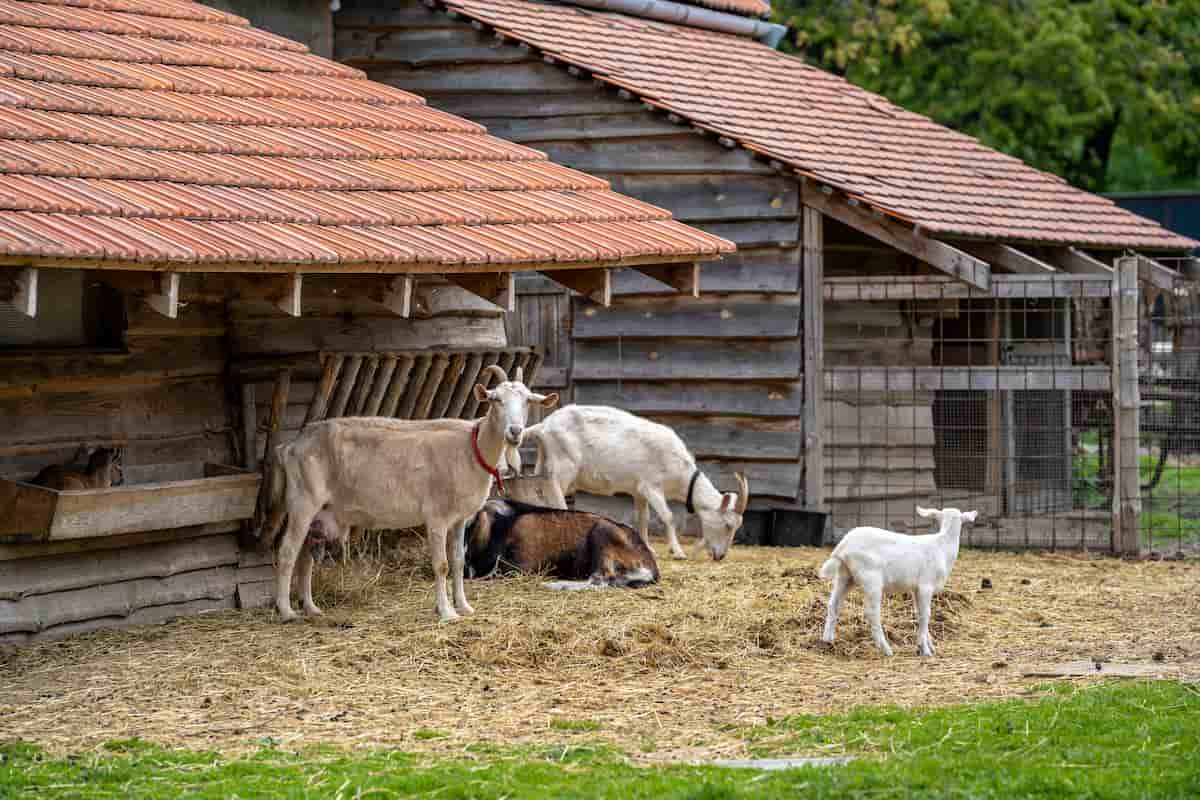Johne’s Disease is a chronic bacterial infection caused by Mycobacterium avium subspecies paratuberculosis (MAP) that affects the small intestine of goats and other ruminants. The disease can cause significant economic losses for goat farmers due to reduced milk production and weight loss. It is a challenging disease to manage due to its chronic nature and difficulty detecting it early. However, with proper preventive measures and early detection, Johne’s Disease can be controlled.

Johne’s Disease Management in Goat
Causes of Johne’s Disease
Johne’s Disease (JD) is primarily caused by Mycobacterium avium subspecies paratuberculosis (MAP), a slow-growing, acid-fast, gram-positive bacterium mainly affecting cow ruminants, sheep, and goats.
Occurrence of Johne’s Disease
- The bacterium MAP can survive in infected animals’ soil, water, and feces, making it easy to transmit from one animal to another. The most common transmission mode is ingesting contaminated food or water or directly contacting infected feces, milk, or other bodily fluids.
- Other factors that may contribute to the development of Johne’s Disease include genetics, stress, poor nutrition, and environmental factors such as overcrowding and poor sanitation. While there is evidence of a genetic component to JD susceptibility in some animals, the disease is not solely inherited and is not contagious among animals that are not infected.
Disease Cycle of Johne’s in Goat
Johne’s disease cycle in goats typically starts with ingesting MAP bacteria through contaminated feed, water, or milk. Once inside the goat’s body, the bacteria travel to the intestine and invade the intestinal wall, where they can replicate and multiply. Over time, the infection progresses, and the goat may begin to show clinical signs of Johne’s Disease, such as chronic diarrhea, weight loss, and reduced milk production.
Infected goats can excrete MAP bacteria in their feces, contaminating the environment, including feed and water sources, soil, and bedding. Other goats on the same farm can then become infected through direct contact with the contaminated environment or by ingesting contaminated feed or water. The disease cycle continues as the newly infected goats show signs of infection and excrete MAP bacteria, further contaminating the environment and potentially infecting other goats.
In addition to horizontal transmission from goat to goat, Johne’s Disease can be vertically transmitted from infected does to their offspring through infected milk or feces during birth. This can lead to young goats being infected with MAP early in life, resulting in more severe and chronic diseases. Overall, Johne’s disease cycle in goats is characterized by the continuous transmission of MAP bacteria through contaminated environments and infected animals, leading to the gradual spread and persistence of the disease within a herd.
Symptoms of Johne’s Disease in Goat
- Chronic wasting: This is one of the most common and characteristic signs of Johne’s Disease in goats. The animal may gradually lose weight despite consuming adequate amounts of feed, leading to a gradual decline in overall body condition.
- Pasty feces or diarrhea: In the early stages of the disease, goats may develop pasty feces or occasional diarrhea. As the disease progresses, diarrhea may become more severe and chronic, leading to dehydration and electrolyte imbalances.
- Hide and bone condition: In advanced cases of Johne’s Disease, the animal may develop a hide and bone condition, with prominent bones and a thin, emaciated appearance.
- Reduced milk production: Infected lactating goats may experience a decline in milk production or may stop producing milk altogether.
- The corrugated appearance of the intestine: During the post-mortem examination, the intestine of infected goats may have a corrugated appearance with thickened and folded intestinal walls.
In case you missed it: Caseous Lymphadenitis Management in Goats: Disease Symptoms, Treatment, Diagnosis, and Prevention

Diagnosis of Johne’s disease in Goat
- Intradermal skin testing: Intradermal skin testing using Johnin purified protein derivative (PPD) can detect the cellular immune response to MAP bacteria in infected animals. This test involves injecting an amount of PPD into the goat’s skin and observing the skin reaction. A positive reaction indicates exposure to MAP bacteria.
- Interferon-gamma assay: Interferon-gamma assay (IGRA) can also assess the cellular immunity to MAP bacteria in infected goats. This test involves measuring the level of interferon-gamma produced by T-cells in response to MAP antigens.
- Acid-fast staining: Acid-fast staining of lymph nodes (ileal and ileocecal), intestinal scrapings, and feces can be used to identify MAP bacteria. The bacteria appear as red, acid-fast bacilli when stained.
- Culture and PCR: Culture and Polymerase Chain Reaction (PCR) techniques can detect MAP bacteria in intestinal tissues, lymph nodes, and feces. These techniques allow for the specific identification of MAP bacteria and can provide a definitive diagnosis.
- Antibody detection: Detection of antibodies in the later or final stages of the disease can also be attempted for diagnosis. However, it should be noted that antibody levels may not be detectable in the early stages of the disease.
Treatment and Control of Johne’s Disease
Treating Johne’s Disease in goats with antimycobacterial agents is generally not effective due to the slow-growing nature of the causative organism, MAP bacteria. Additionally, the bacteria may be present in different tissues and organs, making it difficult to eradicate the infection. Therefore, prevention and control of the disease are crucial in managing Johne’s Disease in goat herds.
Some control and prevention measures that can be taken to manage Johne’s Disease in goats include (Test and cull): Identifying and removing infected animals from the herd through testing and culling can help prevent the spread of the disease to other animals.
Preventive Measures of Johne’s Disease in Goats
- Improved biosecurity: Good biosecurity practices, such as proper cleaning and disinfection of equipment, can help reduce the risk of transmission of MAP bacteria between animals. Limiting visitor access to the farm and avoiding mixing goats from different herds is also important.
- Avoiding contaminated feed and water: MAP bacteria, including feed and water sources, can be present in the environment. Ensuring that feed and water sources are clean and contamination-free can help reduce the risk of infection.
- Separate sick animals: Suspected animals should be separated from the rest of the herd to prevent further disease transmission.
- Avoid feeding infected milk: Infected animals may excrete the bacteria in their milk, so it is important to avoid feeding their milk to neonates.
- Changing pasture land: As MAP bacteria can survive in the environment for extended periods, changing pasture land for infected animals can help reduce the risk of transmission within the herd.
In case you missed it: Enterotoxemia Management in Goats: Disease Symptoms, Treatment, Diagnosis, and Prevention

Conclusion
Johne’s Disease is a serious concern for goat farmers due to its chronic nature and significant economic impact. Early detection and implementing of preventive measures, such as test and cull policies, improving biosecurity, avoiding contaminated feed and water, and separating sick animals, can control the spread of the disease within goat herds. While there is currently no effective treatment for Johne’s Disease, working closely with a veterinarian and implementing a comprehensive management plan can help reduce the risk of transmission and maintain the health of goat herds.
- Beneficial Insects in Pest Management
- Natural Solutions for Pest Control in Flower Gardens
- Types of Fungicides Used in Agriculture
- Common Issues in the Fruit Development Stage of Pomegranate Farming
- Fruit Development Issues in Papaya: Easy Solutions and Treatment
- Soil-Borne Diseases and How to Protect Your Plants
- Practices to Prevent Disease Spread in the Garden
- From Wilted to Thriving: How to Treat Root Rot Naturally in Houseplants
- Natural Remedies to Cure Brown Spots on Fig Tree Leaves